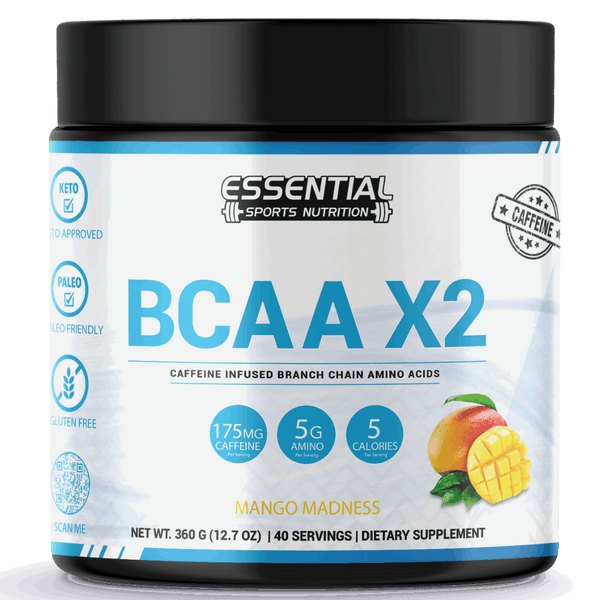Rucking for Zone 2: The Ultimate Guide to Crushing Your Fitness Goals!
Rucking for Zone 2 involves carrying weight while maintaining your heart rate at 60-70% of your maximum, optimizing both fat metabolism and cardiovascular efficiency. This low-intensity endurance exercise builds an aerobic base essential for long-term fitness. To effectively train in Zone 2, calculate your Zone 2 heart rate range and monitor it during your sessions. Rucking offers a low-impact alternative to running, reducing joint stress and injury risk while engaging multiple muscle groups. Aim for 30-60 minute sessions to maximize benefits. If you want to explore the full potential of Zone 2 rucking, there's more to uncover.

Key Takeaways
Rucking at 60-70% of maximum heart rate builds an aerobic base and enhances cardiovascular health.
Zone 2 rucking improves fat metabolism, aiding sustainable weight management and long-distance endurance.
Maintaining 30-60 minute sessions ensures effective Zone 2 training without overtraining or injury.
Using a heart rate monitor helps keep the pace within the optimal Zone 2 range for maximum benefits.
Proper form, hydration, and starting with 10-20% of body weight are essential for effective Zone 2 rucking.
What Is Zone 2 Rucking?
Zone 2 rucking, an endurance exercise performed at 60-70% of your maximum heart rate, focuses on building your aerobic base and promoting fat utilization for fuel. By engaging in Zone 2 training, you target a specific heart rate range that optimizes your body's ability to sustain prolonged activity at low intensity. This zone is essential for enhancing your aerobic base, which refers to the foundation of your cardiovascular fitness.
Maintaining this heart rate range during rucking ensures that your body efficiently utilizes fat as its primary energy source. This metabolic adaptation is important for increasing your overall endurance and stamina. Zone 2 training also emphasizes low-intensity exercise, reducing the risk of injuries associated with high-intensity workouts. The controlled, steady pace characteristic of Zone 2 rucking allows for consistent training without overloading your musculoskeletal system.
Tracking your heart rate is crucial to stay within the Zone 2 range, guaranteeing that the exercise remains effective. You can systematically build your aerobic base by personalizing your workouts to maintain this specific heart rate. This methodical approach aligns with recommendations from GORUCK HQ, which underscores the importance of Zone 2 training for enhancing both strength and endurance.
Benefits of Zone 2 Cardio Training

Engaging in Zone 2 training enhances cardiovascular health by optimizing heart rate efficiency and oxygen utilization. Additionally, this training intensity improves fat metabolism, allowing your body to use fat as a primary fuel source during endurance activities. These benefits collectively promote sustainable fitness and prevent overtraining.
Enhanced Cardiovascular Health
Engaging in Zone 2 training during rucking greatly enhances cardiovascular health by improving aerobic capacity and optimizing heart function. By maintaining a Zone 2 heart rate, typically 60-70% of your maximum heart rate, you're training your cardiovascular system to become more vital. This sustained, moderate-intensity exercise increases your heart's stroke volume, allowing it to pump more blood per beat, thereby enhancing overall heart function.
Rucking in Zone 2 effectively builds your aerobic capacity. This means your body becomes better at utilizing oxygen to produce energy, which is essential for endurance activities. As a result, you'll notice improved stamina and reduced fatigue during prolonged efforts. Regular Zone 2 rucking also strengthens your heart muscle, making it more resilient and less susceptible to cardiovascular diseases.
Another advantage of Zone 2 rucking is its low-impact nature, which minimizes stress on your joints. This makes it an excellent choice for individuals looking to improve heart health without the high impact associated with running. Consistent Zone 2 training during rucking boosts your endurance and contributes to a robust cardiovascular system, ensuring long-term health benefits.
Improved Fat Metabolism
Regular training in Zone 2 greatly enhances your body's ability to metabolize fat, improving endurance and energy efficiency during rucking sessions. Zone 2 training targets the aerobic energy system, which relies heavily on fat oxidation for fuel. You optimize fat metabolism by maintaining a heart rate within this zone, typically 60-70% of your maximum.
Here's how effective Zone 2 training can improve your rucking performance:
Increased Fat Utilization: Your body becomes more efficient at using fat as an energy source, reducing the reliance on glycogen stores and delaying fatigue.
Enhanced Aerobic Capacity: Boosting your aerobic capacity allows you to sustain longer, lower-intensity efforts, essential for extended rucking sessions.
Weight Management: Improved fat metabolism aids in weight management, contributing to better overall fitness and endurance.
Zone 2 training is particularly beneficial for long-distance rucking, as it conditions your body to utilize fat more effectively, ensuring a steady energy supply. This increased efficiency in fat metabolism enhances endurance and supports weight management goals. By focusing on Zone 2, you're setting a foundation for sustained, efficient energy use, critical for prolonged physical activity such as rucking.
Finding Your Zone 2 Numbers
To accurately determine your Zone 2 heart rate, start by calculating 60-70% of your maximum heart rate. For instance, if you're 30 years old with a maximum heart rate of 190 beats per minute (bpm), your Zone 2 range would be 114-133 bpm. Staying within this range during your ruck guarantees you're training in Zone 2, optimizing your cardio workout for maximum benefits.
Zone 2 training is pivotal for building aerobic endurance and promoting efficient fat metabolism. When your heart rate is within this specific range, your body primarily uses fat as a fuel source, enhancing your overall fitness without overtraining. Monitoring your heart rate during a ruck helps you stay in the best zone, ensuring each session is effective.
Using a heart rate monitor can assist in keeping track of your heart rate, allowing you to make real-time adjustments. By consistently training in Zone 2, you'll notice improvements in your cardiovascular health and endurance. Accurately finding and maintaining your Zone 2 numbers is essential for maximizing the benefits of your cardio training and ensuring you're working out at the right intensity.
Tips for Effective Rucking

Select proper gear to optimize your Zone 2 rucking, including a well-fitted rucksack and appropriate footwear to minimize injury risk. Use a heart rate monitor to maintain an ideal rucking pace, keeping your heart rate within 60-70% of your maximum. Gradually increase the weight and duration of your rucks while incorporating varied terrains to enhance cardiovascular endurance.
Proper Gear Selection
When selecting gear for effective rucking, prioritize a sturdy hiking pack with padded shoulder straps and a waist belt to guarantee proper weight distribution. This specific combination is essential for maintaining balance and reducing strain on your back and shoulders, especially during extended rucking sessions.
To ensure maximum comfort and efficiency, consider the following features:
Adjustable straps: These allow you to customize the fit, ensuring the pack is snug and stable, minimizing unwanted movement.
Padded back panel: This provides cushioning and ventilation, reducing the risk of excessive sweating and discomfort.
Multiple compartments: These help distribute the weight evenly and keep your gear organized, which is critical for a balanced rucking experience.
A pack with a hydration system or easy access to water bottles is also advantageous for maintaining hydration during longer sessions. An analytical approach to proper gear selection can greatly enhance your performance and comfort in Rucking For Zone 2 activities. By focusing on key elements like a sturdy hiking pack with padded shoulder straps, you ensure that your gear is not just functional, but also supportive in maintaining your physical well-being during rucking. Choose wisely to make your rucking journey both effective and enjoyable.
Ideal Rucking Pace
After selecting the right gear, you'll need to focus on maintaining an ideal rucking pace to maximize the benefits of Zone 2 training. The key to staying in Zone 2 is to keep your heart rate within 60-70% of your maximum heart rate. This allows you to harness aerobic benefits effectively. A practical way to gauge if you're within this range is to ruck at a conversational speed—where you can comfortably talk without gasping for air.
Consistency and sustainability are paramount. Maintaining a steady pace can build endurance and promote fat utilization for fuel, which are critical aspects of Zone 2 training. Adjust your speed as needed to stay within Zone 2, which not only optimizes aerobic benefits but also minimizes the risk of injury.
Rucking at the ideal pace helps improve your aerobic base, enhancing overall efficiency. This pace strengthens your cardiovascular system, making your heart work more effectively over time. Always monitor your heart rate to confirm you're not exceeding Zone 2 limits. Doing so will maximize the positive outcomes of your rucking sessions, aligning them with your fitness goals.
Comparing Zone 2 to Other Zones

When compared to higher heart rate zones like Zone 3, 4, and 5, Zone 2 prioritizes building an aerobic base and efficient fat utilization over the intensity-driven gains seen in the higher zones. Zone 2 training, defined by a heart rate range of 60-70% of your maximum, offers distinct cardio benefits without the risk of overtraining or injury. This approach steadily builds your aerobic capacity, enhancing endurance through a sustainable, stress-free regimen.
Higher zones, per their increased intensity, push your cardiovascular system harder, resulting in quicker gains but also higher stress and injury risk. In contrast, Zone 2 training:
Promotes efficient fat metabolism: This zone emphasizes fat as a primary fuel source, optimizing energy utilization.
Enhances mitochondrial density: More mitochondria per muscle cell means better energy production and endurance.
Reduces injury risk: Lower intensity workouts minimize wear and tear, making them a safer long-term strategy.
Maintaining a conversational pace in Zone 2 helps personalize your workouts, ensuring you're in the best intensity range. Tracking your heart rate and staying within this zone can maximize long-term cardio benefits without the burnout often associated with higher-intensity training.
Rucking Vs. Running

Rucking offers a low-impact, joint-friendly alternative to running, making it an ideal exercise for building aerobic endurance with minimal risk of overuse injuries. While running can be an effective cardio exercise, it often demands a higher intensity and places greater stress on your joints, potentially leading to injuries like shin splints or tendonitis. In contrast, rucking involves carrying a weighted backpack during a walk, which distributes stress more evenly and reduces the impact on your knees and ankles.
The benefits of rucking extend beyond just being a low-impact workout. It's an excellent way to enhance both strength and endurance simultaneously. Adding weight increases resistance, engaging muscle groups and promoting functional strength. Rucking also simplifies the exercise routine—requiring less technical form than running—making it accessible for individuals across various fitness levels.
Rucking can be more enjoyable and sustainable. It allows you to engage in a consistent workout routine without the need for high variability in training, unlike running, which often requires changes in intensity and duration to prevent plateaus. Ultimately, rucking provides a balanced approach to cardio exercise, offering a blend of aerobic and strength benefits while minimizing injury risk.
Ideal Duration for Zone 2 Rucking

To maximize the aerobic benefits of Zone 2 training, aim for rucking sessions that last between 30 to 60 minutes, ensuring you stay within your peak heart rate range. This duration is ideal for promoting cardiovascular efficiency and enhancing fat metabolism without excessive strain. Monitoring your heart rate, typically between 60-70% of your maximum beats per minute (bpm), is essential for staying in the Zone 2 threshold.
Balancing the frequency of your sessions with their duration is important. Engaging in two to three rucks per week allows your body to adapt while minimizing the risk of overtraining. Each session should consider the amount of weight carried, as this impacts both the intensity and the overall benefits of the workout.
30-minute rucks: Ideal for beginners or those using rucking as active recovery.
45-minute rucks: Great for intermediate ruck training, striking a balance between duration and intensity.
60-minute rucks: Best for seasoned athletes aiming to maximize endurance and aerobic capacity.
For those looking to build endurance, extending your ruck training to 90 minutes occasionally can be beneficial. However, always tailor the duration based on your fitness level and recovery capacity to maintain consistent training adaptations.
Common Mistakes to Avoid

Neglecting key aspects of rucking can undermine your Zone 2 training efficiency and lead to unnecessary setbacks. One prevalent mistake is starting with too much weight in your ruck. Aim for 10-20% of your body weight to prevent strain and injury. Remember, the benefits of Zone 2 training hinge on sustainable efforts, not overexertion.
Proper hydration is another essential factor. Dehydration can impair both performance and recovery, so make sure to drink water regularly before, during, and after your long ruck. Additionally, overtraining is a common pitfall. Rucking too often without adequate rest days can lead to injuries and burnout. Scheduling rest days is crucial for muscle recovery and overall performance enhancement.
Maintaining proper form and posture is important. A straight back and engaged core muscles not only improve efficiency but also reduce the risk of injury. Lastly, resist the urge to push the pace into higher heart rate zones. Staying within the Zone 2 range is crucial for maximizing aerobic benefits. Elevated heart rates shift the focus to anaerobic systems, which defeats the purpose of Zone 2 training. Make sure to monitor your intensity to stay within the desired zone for the best outcomes.
Rucking for Different Fitness Levels

Ensuring effective Zone 2 training involves tailoring your rucking regimen to match your fitness level, whether you're a beginner, intermediate, or advanced athlete. Rucking in Zone 2, where your heart rate remains within 60-70% of your max heart rate, is essential for building aerobic capacity without overstressing your body.
For beginners, start with lighter loads and shorter distances. This approach helps you acclimate to the physical demands and guarantees you can maintain a steady pace within your target heart rate zone. Key strategies include:
Light loads: Use a backpack with 10-20% of your body weight.
Short distances: Begin with 2-3 mile rucks.
Gradual progression: Increase weight and distance incrementally.
Intermediate ruckers can enhance their endurance by integrating moderate weights and extending their cardio days. Aim for 20-30% of your body weight and distances of 4-6 miles.
Advanced athletes should push their limits with interval training or hill repeats to maximize heart rate variability while staying mainly in Zone 2. Incorporating these methods will elevate your cardiovascular efficiency and overall performance.
Tailoring your rucking workouts prevents burnout and ensures steady, sustainable progress across all fitness levels.
Conclusion

Incorporating Zone 2 rucking into your fitness routine can yield substantial benefits. One interesting statistic: Zone 2 training can enhance mitochondrial density by up to 40%, optimizing your aerobic capacity. You can maximize efficiency and endurance by understanding and applying your Zone 2 numbers. Remember, effective rucking involves proper technique and gradual progression. Whether you're a beginner or an advanced athlete, avoiding common mistakes guarantees you harness the full potential of Zone 2 training.
Benefits of Rucking Zone 2 Cardio FAQs
Q: What are the benefits of rucking for Zone 2 training?
A: Rucking for Zone 2 training provides a low-intensity cardiovascular workout that helps improve endurance, burn calories, and build aerobic capacity. It also strengthens muscles and joints, making it a great full-body workout.
Q: How does Zone 2 cardio benefit rucking?
A: Zone 2 cardio training helps you maintain a moderate heart rate during rucking, allowing you to sustain longer durations of exercise without excessive fatigue. It helps improve aerobic efficiency and overall endurance.
Q: How can I start rucking for Zone 2 training if I'm new to it?
A: To start rucking for Zone 2 training, select a suitable weight for your rucking backpack and maintain a steady walking pace. Focus on staying within your Zone 2 heart rate range for optimal training benefits.
Q: How often should I ruck for Zone 2 training?
A: It is recommended to ruck in Zone 2 cardio at least 2-3 times per week for optimal cardiovascular benefits. Gradually increase the duration and weight of your rucking sessions as you progress.
Q: Can I combine rucking and running for Zone 2 training?
A: You can incorporate a mix of rucking and running in your Zone 2 training routine to vary your workouts and challenge different muscle groups. Ensure you monitor your heart rate to stay within the Zone 2 range.
Q: Why is rucking considered a fantastic cardiovascular training option?
A: Rucking is a fantastic cardiovascular training option because it involves carrying weight on your back, increasing the workout's intensity. This helps improve cardiovascular endurance and strength.
Q: How can I ensure I'm in Zone 2 during rucking?
A: To ensure you're in Zone 2 during rucking, monitor your heart rate using a heart rate monitor or fitness tracker. Aim to maintain a steady pace that allows you to converse while exercising comfortably.
Q: What Is the Best Exercise for Zone 2?
A: Cardiovascular conditioning calls for consistency. Cycling, running, and rowing rank as reliable Zone 2 exercises. They maintain your heart rate at 60-70% of max, ensuring efficient energy utilization, aerobic endurance enhancement, and muscle maintenance.
Q: How Much Does Peter Attia Ruck?
A: Peter Attia typically packs 40-50 pounds in his backpack. He maintains this load for 90 minutes to 2 hours, ensuring his heart rate stays within Zone 2. His pace ranges between 18-20 minutes per mile.
Q: Does Rucking Count as Cardio?
A: Yes, rucking counts as cardio. You engage in low-intensity, steady-state exercise, which raises your heart rate and improves cardiovascular health. It's joint-friendly and effectively maintains your heart rate in Zone 2 for peak endurance and fat burning.




























